
As we all know, buying clothes is not an exact science. One pair of jeans with a 32in waist can be tighter or looser than another pair with the exact same measurements. And while you can go into a shop and try clothes on, you can’t do that with something that is sold exclusively online. Taking a punt on a new outfit online can be a gamble. It’s no different when buying a new bike, whether from a bike shop or off the web, and even with the best returns policy in the world, making a mistake quickly becomes a huge hassle.
Obviously the best approach is to go to a good dealer or attend a demo day and physically try the bike. If that’s not possible the next best option is to make an educated guess about how a bike is going to ride and fit based on its geometry. How do you do that? First, you need to read the previous two parts in our Geometry 101 series. In part one we explain how all the different aspects of geometry affect handling through the lens of weight distribution. In the second part, we cover different ways to manipulate bike geometry, from fitting angle-adjust headsets to mixing and matching wheel sizes, all to achieve the numbers and handling you desire.
In this, part three, we’re going to take a deep dive into reading manufacturers’ claimed geometries and why they rarely translate into real-world numbers. Every brand publishes a sizing guide and a geometry chart to go with each model, but just how accurate are they?
This story is from the {{IssueName}} edition of {{MagazineName}}.
Start your 7-day Magzter GOLD free trial to access thousands of curated premium stories, and 9,000+ magazines and newspapers.
Already a subscriber ? Sign In
This story is from the {{IssueName}} edition of {{MagazineName}}.
Start your 7-day Magzter GOLD free trial to access thousands of curated premium stories, and 9,000+ magazines and newspapers.
Already a subscriber? Sign In

Best places to ride with your kids
Five top venues to keep the nippers entertained this summer
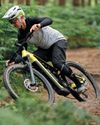
CANNONDALE MOTERRA NEO CARBON 2
It’s got more suspension tunes than a Hitchcock movie, but will this Moterra thrill us or chill us?
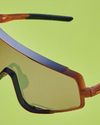
100% GLENDALE GLASSES
When it comes to eyewear, having a large lens not only offers a lot more protection from trail splatter, it puts the frames further out from your field of view, allowing you to focus on the terrain in front of you. The Glendale is absolutely vast, and actually has a lens size akin to a full downhill goggle, so you literally can’t see the top or sides of the frame.
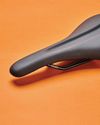
DMR STAGE 2 MTB RAIL SADDLE
DMR's new Stage 2 MTB Rail is one of those new/old products. The shape and construction are identical to the existing Oi Oi saddle, but the company has wrapped it in a new skin and added some harder-wearing reinforcement to the edges. It's also toned down the lairy graphics; this saddle only comes in plain black.

STRAIGHT TORQUING - GUY KESTEVEN
Has tech taken the hard work and fun out of mountain biking, or should we embrace evolution and roll with it?

STORM FORCE
Manon Carpenter may have retired from downhill competition, but her new role as a trail advocate is achieving results far beyond the race track
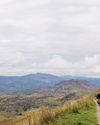
SWEAT AND SLATE
We ride 140 miles through Snowdonia on Cycling UK's newest and gnarliest long-distance trail

HEAD SPACE
New guidance reveals how to spot concussion, and how best to treat it

LATE SUMMER LOVIN'
Classic UK holiday hotspots that really shine when the crowds have gone
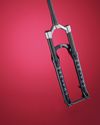
HOT STUFF
WHAT WE'RE EXCITED ABOUT THIS MONTH